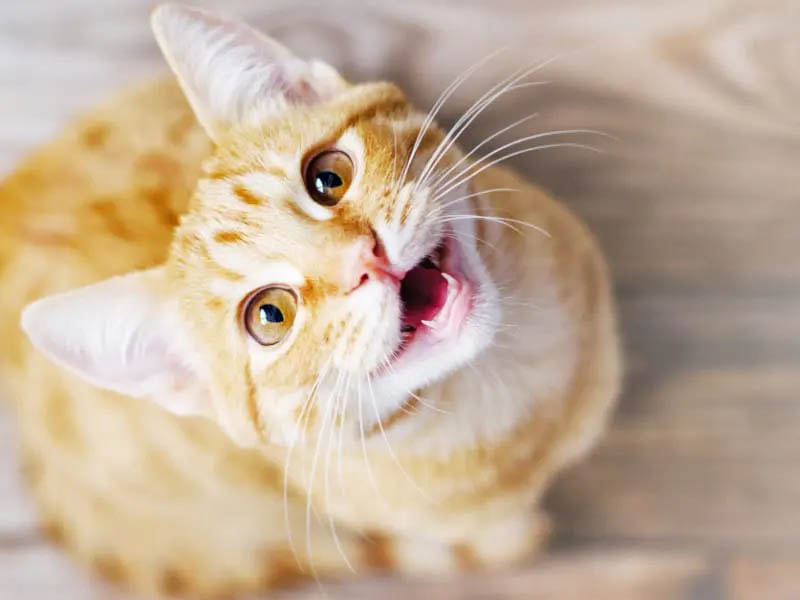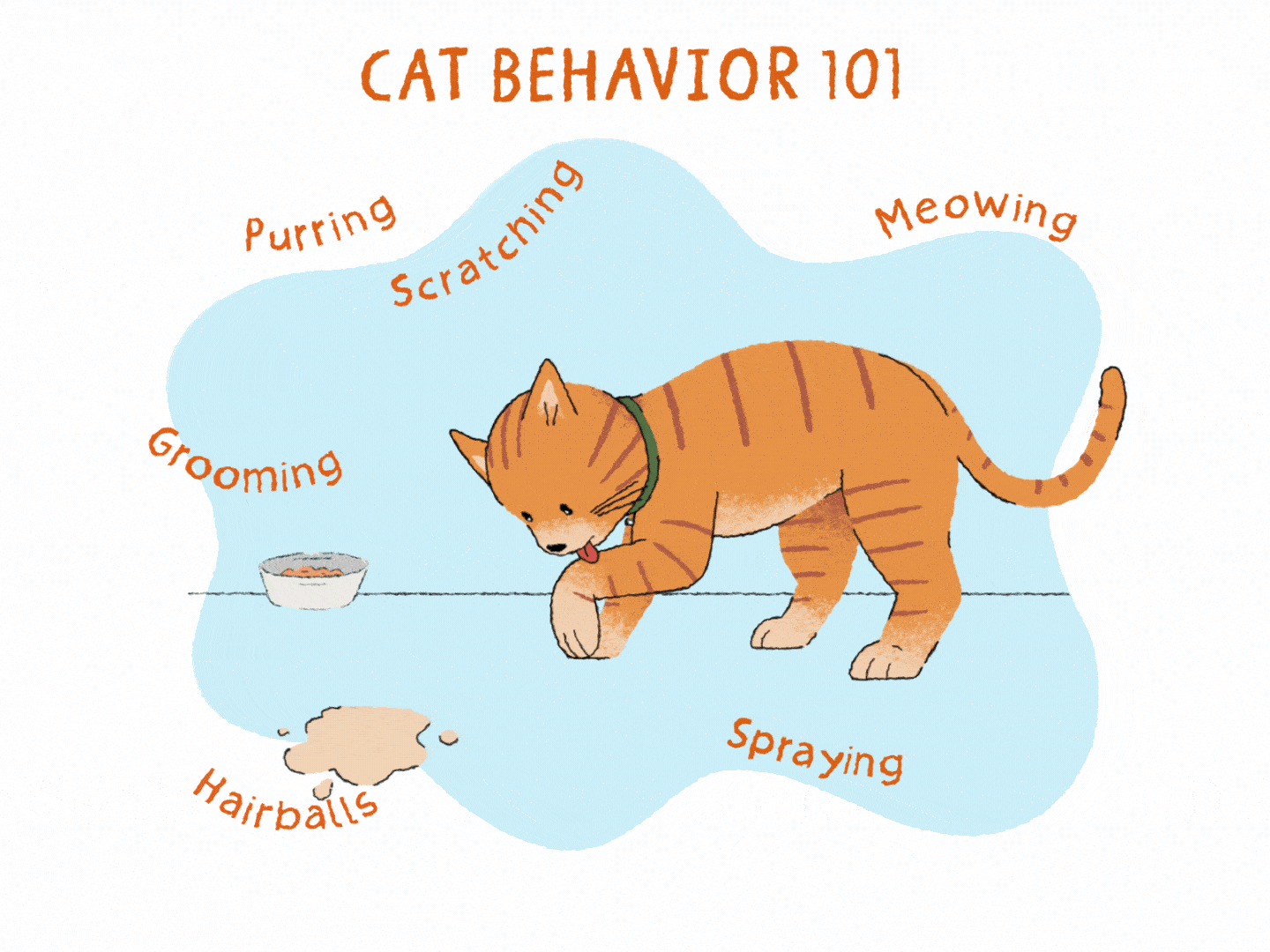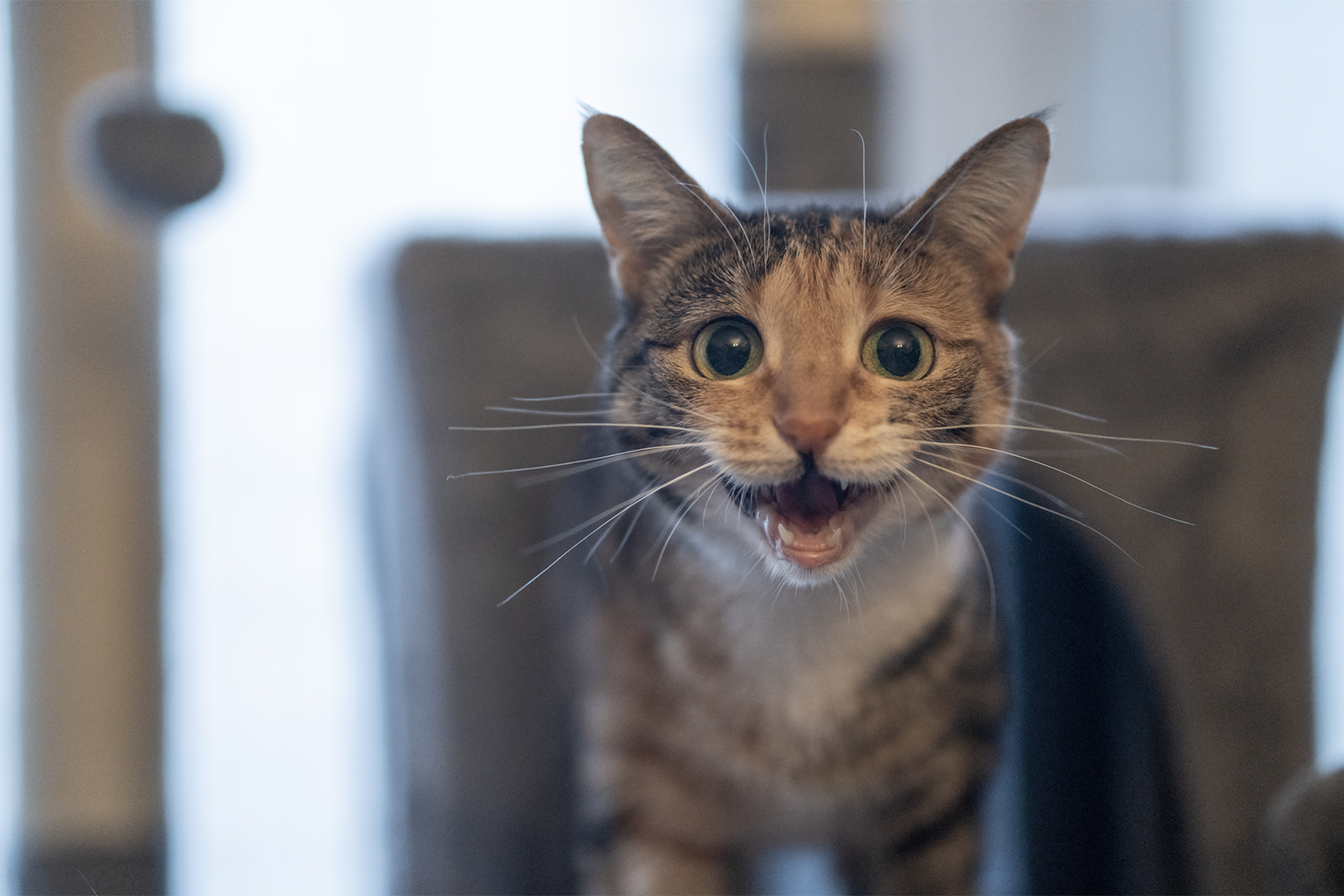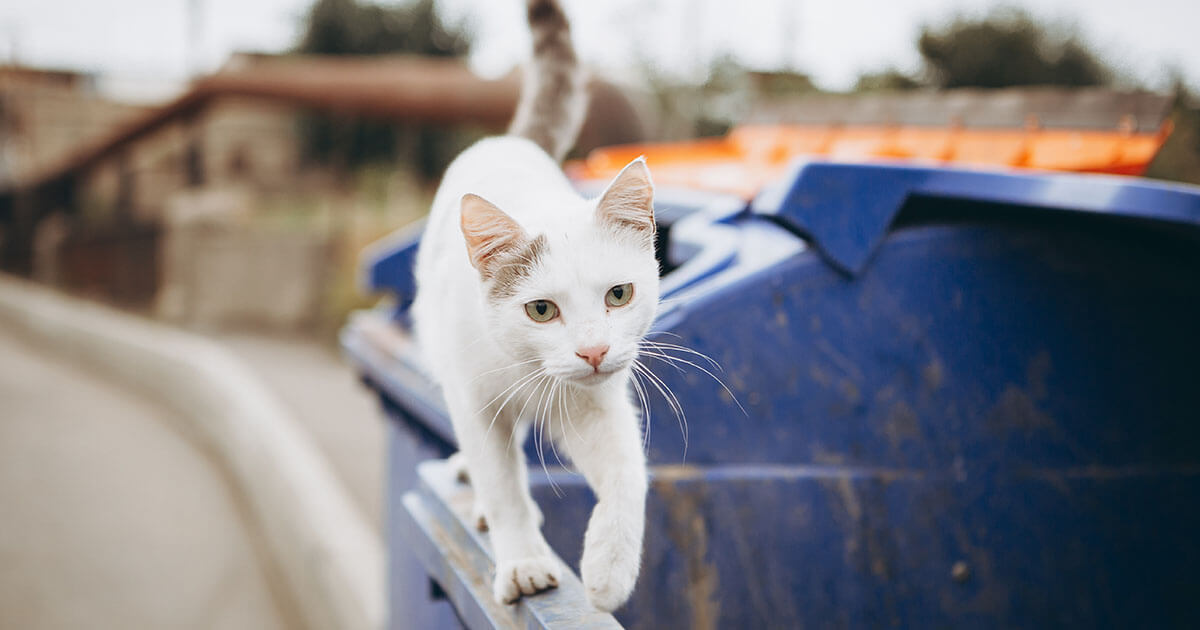A stray cat may meow at you to communicate a need or to seek attention. It could be hungry, lonely, or in distress.
Stray cats often rely on human interaction for survival, and meowing is their way of initiating contact. They might be seeking food, affection, or help, and by vocalizing, they are expressing their desires or concerns directly to you. Since cats are typically independent creatures, a stray’s choice to approach and meow can indicate a significant level of trust or desperation.
Understanding this behavior is crucial for anyone who comes across a meowing stray cat. Their vocalizations serve as a bridge between their world and ours, signaling that they may require our intervention or companionship. By meowing, stray cats often express the hope that a human will notice and provide them with what they’re missing – be it food, shelter, or a touch of kindness. So, the next time a stray cat meows at you, consider it a little plea for attention, and respond accordingly with care and consideration.
Decoding Feline Communication
Wondering why a stray cat is meowing at you? Cats communicate in various ways, and vocalizations are just one part of their complex language. Understanding the subtleties can help foster a deeper connection between you and your feline friend—even if it’s a newfound one on the street. Let’s decode the meows, tail twitches, and ear flicks to understand what that stray might be saying.
The Language Of Meows
Cats meow for many reasons. While kittens use it to call their mother, adult cats reserve meows primarily for human interaction. Every meow varies in pitch, length, and frequency based on their needs. Here are some common reasons cats meow:
- Greeting: A short meow or a series of meows as a cheerful “hello”.
- Request: Persistent meows often mean your feline friend might be hungry or eager to play.
- Attention-Seeking: A stray cat meowing might simply desire some company.
- Concern: Longer, more plaintive meows can suggest discomfort or anxiety.
Tail Twitches And Ear Flicks
Apart from vocal cues, cats use body language to express themselves. Ear and tail movements are particularly telling indicators of a cat’s inner thoughts and intentions. Observe carefully:
| Tail Movement | Meaning |
|---|---|
| Upright, quivering tail | Excitement or marking territory |
| Thrashing tail | Irritation or anger |
| Slowly swaying tail | Deep concentration or hunting mode |
Alongside tails, cat’s ears are mood indicators:
- Forward: Interest or happiness.
- Swiveling: Attentive and assessing surroundings.
- Flattened: Fear, aggression, or irritation.
By decoding these feline signals, you’re on your way to understanding the mystery behind that stray cat’s meow. Just remember, each cat is unique and so is their way of communicating!

Credit: www.facebook.com
Reasons Behind Stray Cat’s Meow
Ever wonder why a stray cat is meowing at you? Cats communicate with us through their meows. Here are some reasons a stray cat might be trying to ‘talk’.
Seeking Attention And Food
Stray cats often meow to catch your eye. They might be hungry or just crave social interaction. Regular feeders become familiar faces to strays, prompting vocal greetings.
Responding to these meows with food or a pat can reinforce the behavior. It’s their way of saying “Hello, remember me?” or “Can I have some snacks?”
- Empty stomach: Meows can signal hunger.
- Desire for companionship: Even strays seek affection.
Health Issues And Distress Signals
If a stray cat’s meowing sounds unusual or constant, it could be an alarm. This might indicate a health problem or that they’re in trouble.
Louder or more frantic meows might mean they’re hurt or scared. It’s wise to approach stray cats with care, as their health status is unknown.
| Meow Type | Possible Meaning |
|---|---|
| Continuous | Seeking help or in pain |
| High-pitched | Possibly injured or scared |
| Chirp-like | Trying to get attention |
Understanding Stray Cat Behavior
Getting to know stray cat behavior helps you understand their needs. A meow from a street cat could mean many things. They might feel hungry or they might want a friend. Let’s dive into the world of stray cats and their ways of communication.
Territorial Vocalizations
Stray cats claim places with meows. They tell others, “This is my spot!” Think of their meows as a no-trespassing sign. They use loud sounds to scare other cats away. It keeps their food and sleeping places safe.
Socializing With Humans
Stray cats sometimes talk to people. A meow might mean, “Please feed me” or “I trust you”. They learn that some humans are kind. These cats often meow to say hello or ask for help. Gentle meows invite friendship, while loud ones might show worry or pain.

Credit: kristenlevine.com
Responding To A Stray’s Call
Imagine walking down the street when you hear a soft meow. A stray cat looks at you with hopeful eyes. You wonder, “Why is this stray cat meowing at me?” Cats communicate in various ways, and meowing is a primary method for them to express needs or seek attention. “Responding to a Stray’s Call” can be an enriching experience. It’s essential to understand why the cat is reaching out and how to respond appropriately and safely.
Assessing The Cat’s Needs
When a stray cat meows, it could signify hunger, thirst, or the need for shelter. Take a moment to observe the cat’s behavior and physical condition. Does the cat look malnourished? Is it injured? Be observant for signs of distress. The cat’s meow can also signal a desire for human interaction or indicate that it’s lost and looking for its home. Watch for a collar or any identification that could help reunite the cat with its owner. Here’s a bullet-point list to check quickly:
- Physical appearance – Check for signs of injury or poor health.
- Demeanor – Is the cat friendly or scared?
- Identification – Look for a collar, tag, or microchip.
Approaching And Helping Wisely
When you decide to respond to the stray’s call, approach the cat calmly. Move slowly to avoid frightening it. Offering food can be a great way to gain the cat’s trust. Speak gently, and let the cat come to you. If the cat seems shy or hesitant, respect its space and provide quiet companionship. Consider these steps:
- Approach slowly and quietly.
- Assess the cat’s reaction to your presence.
- Offer food or water if the cat is hungry or thirsty.
- Be patient and wait for the cat to approach.
If you choose to take further action, such as adopting or reporting the stray to a local shelter, remember to do so responsibly. Contact animal rescue organizations for help, and never put yourself or the cat in danger. Be mindful that a stray cat’s trust is a gift and must be handled with care and consideration.
The Ethics Of Interacting With Stray Cats
Encountering a stray cat that meows can tug at the heartstrings. It raises vital questions about our responsibilities towards these feline friends. Ethical interaction with stray cats involves more than just a friendly pat. It calls for thoughtful actions that help the cats while considering community well-being.
Responsible Feeding
Offering food seems like a kind gesture. Yet, it must be done responsibly. Start by serving nutritious cat food. Feeding should be regular if you commit to it. Unpredictable feeding can lead to dependency and health issues.
- Use designated feeding spots to avoid attracting cats to dangerous areas.
- Keep the feeding area clean to prevent the spread of diseases.
- Do not overfeed and create dependence, make sure cats maintain their ability to hunt and forage.
Considering Spay/neuter Programs
Spaying and neutering help control the stray population. Local shelters often run such programs. Involvement in these programs is ethical and practical. It reduces the number of future strays.
| Benefit | Explanation |
|---|---|
| Population Control | Decreases stray cat numbers over time. |
| Healthier Cats | Reduces risks of disease and malnourishment. |
| Better Community Relations | Minimizes conflicts between stray cats and humans. |
Contact local animal welfare groups to learn about spaying and neutering. They can guide on the best ways to assist in this ethical endeavor.

Credit: www.banfield.com
Frequently Asked Questions Of Why Is Stray Cat Meowing At Me
What Does It Mean If A Stray Cat Meows At You?
A stray cat meowing at you often seeks attention, food, or assistance. It signals trust or expresses curiosity about your presence.
How Do You Know If A Stray Cat Likes You?
A stray cat may like you if it approaches you willingly, purrs, head-butt or rubs against you, and shows relaxed body language. It might also follow you or meow to get your attention.
What Does It Mean When A Cat Meows At Me?
A cat meowing at you usually signals a request for attention, food, or indicates that it’s feeling sociable and wants to communicate with you.
Why Do Stray Cats Meow Loudly At Night?
Stray cats often meow loudly at night due to mating calls, territory marking, or seeking attention. They also may be communicating distress or hunger. Loud meowing serves as a social signal among felines during nocturnal hours.
Conclusion
Understanding the myriad reasons behind a stray cat’s meows can deepen our bond with these feline friends. Whether seeking attention, food, or help, each meow tells a story. By listening closely and responding with care, we can foster trust and perhaps help a stray in need.
Remember, compassion is key.

